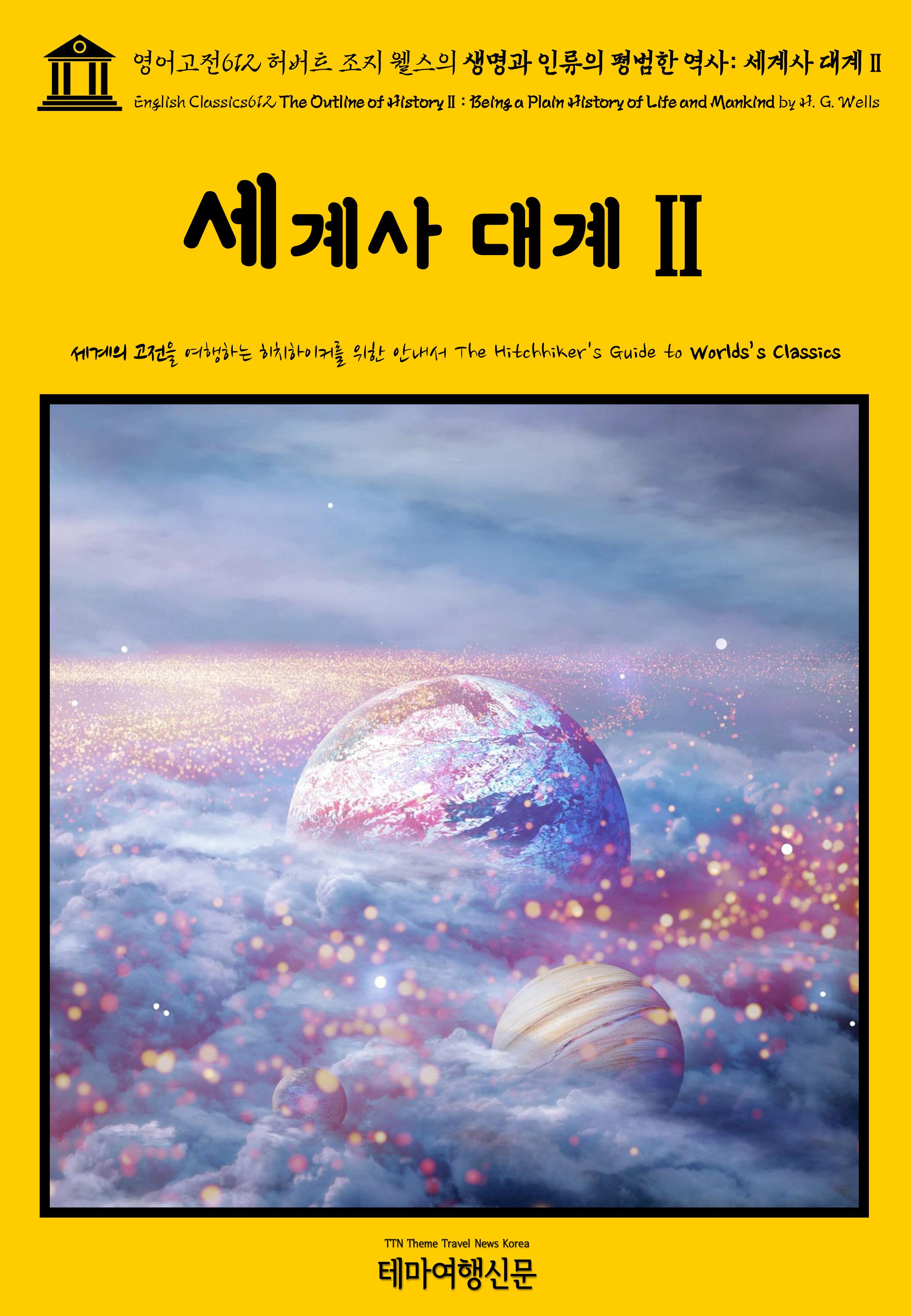▶ 인류의 모든 이야기(The Whole Story of Man) 또는 생명과 인류의 평범한 역사가 되는 것(Being a Plain History of Life and Mankind) : 세계사 대계(The Outline of History)(1920)는 허버트 조지 웰스(H. G. Wells)(1866~1946)의 역사서(history book)입니다. 웰스는 소설가이기 이전에 당대의 지식인이자 역사가, 그리고 교육에 관심이 많은 작가로써 1919년부터 지구의 기원(The origins of the Earth)부터 웰스가 직접 경험한 제1차 세계 대전(The Great War)(1914~1918)까지 세계역사를 연대기별로 일목요연하게 정리해 격주로 연재하기 시작하였습니다. 1920년 연재한 원고를 세계사 대계(The Outline of History)(1920)란 이름의 단행본으로 출간하였으며, 영국을 비롯한 세계 각지에 번역 출간될 정도로 큰 인기를 끌었습니다.
현재까지 최소 200만부 이상이 판매되었으며, 당대 영국 고등 교육기관에서 역사 교육을 위한 필독서로 사랑받았습니다. 또한 조지 웰스는 세계 각지의 오류에 대한 지적을 겸허히 수용하였고, 1937년까지 자신이 직업 원고를 수정하여 개정판을 발간하였습니다. 원고의 완성도 못지않게 당대 유럽인의 우생학과 제국주의에 대한 지지에도 불구하고, 인종주의와 문명적 우월성을 주장하는 이론(theories of racial and civilizational superiority)을 비판한 대목은 현대의 독자에게도 눈여겨볼 만합니다.
▶ THE RACES OF MANKIND. In the early Neolithic Period in Europe?it may be 10,000 or 12,000 years ago or so?man was differentiating all over the world, and he had already differentiated into a number of varieties, but he has never differentiated into different species. A “species,” we must remember, in biological language is distinguished from a “variety” by the fact that varieties can interbreed, while species either do not do so or produce offspring which, like mules, are sterile. All mankind can interbreed freely, can learn to understand the same speech, can adapt itself to co-operation.
인류의 종(種). 10,000~12,000년 전쯤으로 추정되는 유럽의 초기 신석기 시대에 인간은 전 세계적으로 분화하고 있었고 이미 많은 변종으로 분화했지만 다른 종으로 분화한 적은 한 번도 없습니다. 생물학적 언어에서 "종"은 품종이 서로 교배할 수 있는 반면 종은 그렇게 하지 않거나 노새처럼 불임의 자손을 낳는다는 사실에 의해 "다양성"과 구별된다는 사실을 기억해야 합니다. 모든 인류는 자유롭게 교배할 수 있고 같은 말을 이해하는 법을 배울 수 있으며 협력에 적응할 수 있습니다.
▶ 그가 사망한 이후에는 영국 편집자 레이몬드 포스트게이트(Raymond Postgate)(1896~1971)가 제2차 세계 대전(Second World War, WWII)(1939~1945)을 추가하고, 작가의 아들 G. P. 웰스(G. P. Wells)(1901~1985)가 선사시대에 대한 최신 이론을 추가하는 등 지속적으로 업데이트하였습니다. 테마여행신문 TTN Korea 영어고전(English Classics)과 함께 어제도, 오늘도, 내일도 멋진 문학여행을! B
▶ THE ANCESTRY OF MAN. THE origin of man is still very obscure. It is commonly asserted that he is “descended” from some man-like ape such as the chimpanzee, the orang-utang, or the gorilla, but that of course is as reasonable as saying that I am “descended” from some Hottentot or Esquimaux as young or younger than myself. Others, alive to this objection, say that man is descended from the common ancestor of the chimpanzee, the orang-utang, and the gorilla. Some “anthropologists” have even indulged in a speculation whether mankind may not have a double or treble origin;
인간의 조상. 인간의 기원은 여전히 ??매우 모호합니다. 그가 침팬지, 오랑우탄, 고릴라와 같은 어떤 인간과 같은 유인원에서 "후손"되었다고 일반적으로 주장되지만, 물론 내가 어떤 Hottentot 또는 Esquimaux에서 "후손"이라고 말하는 것만큼 합리적입니다. 나보다 어리거나 어리다. 이 반대에 대해 살아 있는 다른 사람들은 인간이 침팬지, 오랑우탄, 고릴라의 공통 조상의 후손이라고 말합니다. 일부 “인류학자”는 인류가 이중 또는 삼중 기원이 아닐 수도 있다는 추측에 빠져 있기까지 합니다.
▶ NEOLITHIC MAN IN EUROPE. THE Neolithic phase of human affairs began in Europe about 10,000 or 12,000 years ago. But probably men had reached the Neolithic stage elsewhere some thousands of years earlier. Neolithic men came slowly into Europe from the south or south-east as the reindeer and the open steppes gave way to forest and modern European conditions.
유럽의 신석기 시대 남자. 신석기 시대의 인간사는 약 10,000년 또는 12,000년 전에 유럽에서 시작되었습니다. 그러나 아마도 사람들은 수천 년 전에 다른 곳에서 신석기 시대 단계에 도달했을 것입니다. 신석기 시대 사람들은 순록과 탁 트인 대초원이 숲과 현대 유럽의 조건에 자리를 양보하면서 남쪽이나 남동쪽에서 천천히 유럽으로 들어왔습니다.
▶ THE LANGUAGES OF MANKIND. IT is improbable that there was ever such a thing as a common human language. We know nothing of the language of Palæolithic man; we do not even know whether Palæolithic man talked freely. We know that Palæolithic man had a keen sense of form and attitude, because of his drawings; and it has been suggested that he communicated his ideas very largely by gesture. Probably such words as the earlier men used were mainly cries of alarm or passion or names for concrete things, and in many cases they were probably imitative sounds made by or associated with the things named.
인류의 언어. 인간의 공통 언어와 같은 것이 있었다는 것은 불가능합니다. 우리는 구석기 시대 사람의 언어에 대해 아무것도 모릅니다. 구석기 시대 사람이 자유롭게 이야기했는지조차 모릅니다. 구석기 시대 사람은 그의 그림 때문에 형태와 태도에 대한 예리한 감각을 가졌다는 것을 압니다. 그리고 그는 자신의 생각을 몸짓으로 매우 많이 전달했다고 제안되었습니다. 아마도 초기 사람들이 사용했던 그러한 단어들은 주로 경악의 외침이나 열정의 외침 또는 구체적인 사물에 대한 이름이었고, 많은 경우에 그들은 명명된 사물에 의해 만들어지거나 관련되는 모방 소리였을 ??것입니다.






